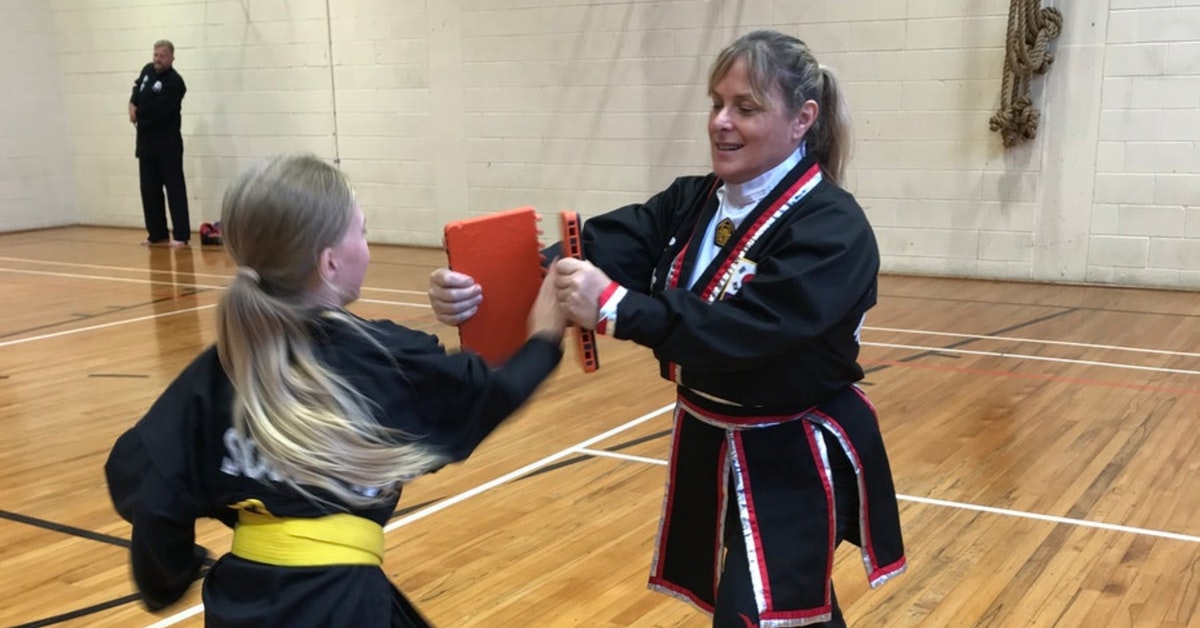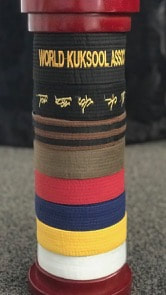|
A traditional martial art, like Kuk Sool Won™, is about more than the development of physical skills. The learning and personal development opportunities it provides go much deeper. This is particularly clear when working with our female students. Many people believe that a martial art is great for girls and women because it teaches self-defence. This is based on the premise that women need to learn how to defend themselves against a physical attack. It sees girls and women as potential victims of violence based on their gender.
While there are undoubted benefits to learning self-defence skills, participation in a martial art provides girls and women with so much more than protection from violence. A starting point to understanding these benefits can be found in the research into the types of benefits sport provides to girls and women. In 2015, an international consultancy (EY), published research on women in senior leadership positions in large corporations in the United States. It identified that 94% of women in the executive team (or C-suite) had played sport and 74% believed that a background in sport can help accelerate a woman’s career. Girls who play sports have “greater social and economic mobility, are less likely to use drugs, have greater personal safety, and perform better at school”. Other research focusing specifically on women who participate in martial arts has found that it is empowering for those women, builds confidence, and can help change gender stereotypes. In martial arts, girls and boys, and women and men train together. In some martial arts, such as Kuk Sool Won™, they even compete against each other in many categories of competition. This creates an environment where men and women learn to work together, promoting equality and challenging traditional views on gender. Almost half of our students are girls and women. Based on our experiences working with them, as well as our own experiences as women martial artists and instructors, we are well aware of the benefits martial arts training provides.
I am passionate about encouraging girls and women to explore their physicality through martial arts. If this is done in a respectful, inclusive environment, the benefits can be truly lifechanging. JKN Jane Hurst First degree black belt and school owner Kuk Sool Won™ of Onewhero Copyright © 2018. Kuk Sool Won™ of Pukekohe and Onewhero. All Rights Reserved.
0 Comments
Martial arts are challenging and as a result, many people quit within the first few months. In my last blog I focused on some of the challenges new students encounter, based on our experience as instructors and school owners in the traditional Korean martial art of Kuk Sool Won™.
The first few months are exciting for new students, but they can also be daunting. How instructors respond to these challenges can make a big difference to how new students experience their introduction to martial arts. Here are some of the ways we try to make these early stages less overwhelming and more enjoyable for white belts at our Kuk Sool Won™ school.
Starting a martial art can be a little daunting but it is also an exciting time. A white belt in Kuk Sool Won™ learns so much in their first few months and it is incredibly rewarding as an instructor to see their growth and development. It is also our job to make sure we make these first few months as easy and stress free as possible, as they transition into martial arts training. JKN Jane Hurst First degree black belt and school owner Kuk Sool Won™ of Onewhero Copyright © 2018. Kuk Sool Won™ of Onewhero. All Rights Reserved.
Most people probably consider that some level of black belt is the hardest rank to achieve in martial arts. While first degree black belt and beyond are difficult to gain, in my opinion they are not the hardest ranks. For most people, the hardest is white belt. It takes many of us years and even decades, as well as a great deal of motivation and courage, to make the commitment to start martial arts training and gain our white belt. For me, it took nearly 45 years. For some it takes even longer. For one woman in our school for example, it took her 72 years!
So why did it take me so long to earn my white belt? I had been interested in martial arts for many years. I tried two different styles before finally committing to Kuk Sool Won™. In my early 20s I tried a popular style of martial arts. I recall finding a place amongst the large number of students and doing my best to copy. No one from the school talked to me or helped me and I didn’t have any one-on-one instruction. It was a rather intimidating and demoralising experience. After two classes I decided not to join the club. In my early 30s I tried a different martial art. It was a small club but I had a similar experience. These experiences really put me off martial arts. It was not until I was in my forties that I stumbled across a martial arts school that was very welcoming towards new students and where I felt comfortable and safe as a beginner. It took me over four decades of life experience to finally earn my white belt. By comparison, the four years or so it takes to get to black belt is relatively quick and easy. If you are currently a white belt, wear it proudly. You have truly earned it. If you have always wanted to try a martial art, but are not sure where to start, check out our blog on how to find a good martial arts school. JKN Jane Hurst First degree black belt and school owner Kuk Sool Won™ of Onewhero Copyright © 2018. Kuk Sool Won™ of Onewhero. All Rights Reserved.
Martial arts training is great for women, both physically and psychologically. However, we often talk to women who would like to try martial arts, but never actually give it a go. Our experience has shown us that there are generally five reasons or “buts” holding women back.
1. But I am not fit, strong or co-ordinated enough. Very few people are when they start training in martial arts and no one expects you to be. Martial arts requires a specific type of physical conditioning which you only gain by doing it. You get fitter, stronger, and more co-ordinated as you train. 2. But I need to lose weight first. If you go into most martial arts schools, you will find people of all different physical shapes and sizes, including instructors. We are not all young and skinny. You don’t need to be lean and toned to train and benefit from martial arts. Over time, your body will get stronger and better conditioned, and you may even lose some weight as a natural part of your training. 3. But I’m not confident enough. It can be intimidating walking into a martial arts school for the first time. There are schools around like ours that try to make this process much friendlier for new people from the moment you first make contact. Take a friend or family member with you for company and support. If you persist through this initial phase of feeling uncomfortable, you will find your confidence dramatically improves. It is part of the many benefits of martial arts training. 4. But I don’t want to fight. Many women are put off by the thought of fighting as part of martial arts training. I know I was. There are though, many martial arts like ours (Kuk Sool Won™), that are self-defence focused and do not involve fighting for belt gradings or as a regular part of training. You don’t need to fight or get hit to learn martial arts. 5. But it’s too blokey. Martial arts is one of the few sports where men and women actively train together. This can be a little intimidating for some women at first. However, there are plenty of schools, like ours, with women instructors and women students. These are a good option for women who feel uncomfortable in a male-dominated environment. Are one of these “buts” unnecessarily holding you back from something you have always wanted to try? JKN Jane Hurst First degree black belt and school owner Kuk Sool Won™ of Onewhero |
Caroline and Jane Hurst
Caroline is a 5th degree black belt and Jane is a 2nd degree black belt in the traditional Korean martial art of Kuk Sool Won™ . They run 2 Kuk Sool Won™ martial arts schools in New Zealand. Archives
March 2019
Categories
All
|





